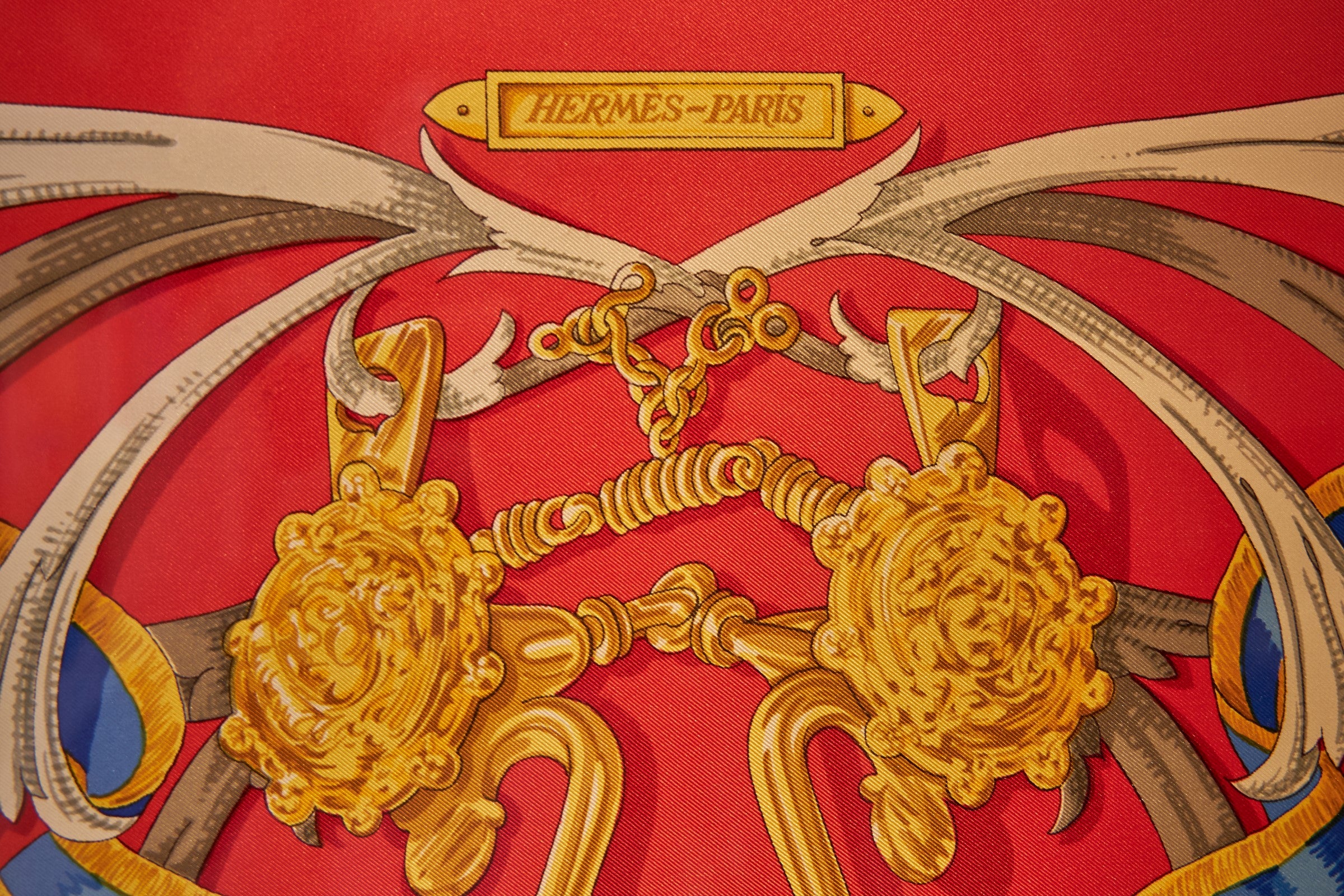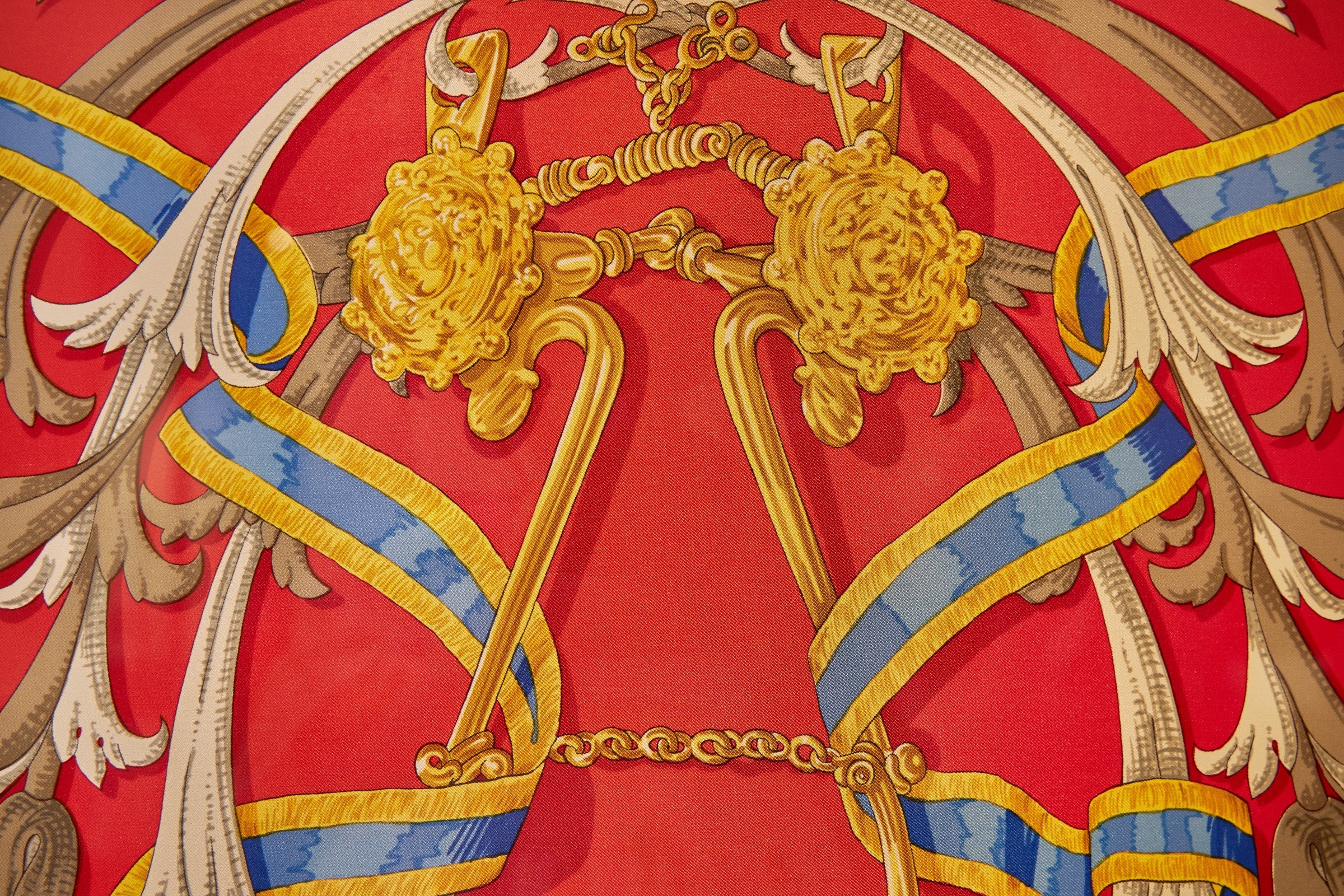











Hermés carrè Le Mors à la Conétable dis.Henry D’Origny ed.1985
The History of the Carré Hermes
The Hermès Carré has 80 years of solid history. Since in 1937 Robert Dumas, Emile's nephew, inspired by Napoleon's "mouchoires à la gloire", presented his first drawing "Jeu d'omni-bus et de dames blanches" for Madeleine-Bastille transport line's inauguration. Every year, in addition to the new designs, Hermès adds five more Carres as limited editions, these latest are re-edited from the past but in different colors. The most famous ever, among all these ones, it's Hugo Grykar's Carré known by all as "Brides de Gala". Its success is due to the Lyons exceptional savoir-faire of Carrè's manufacture, just think that the same legendary gestures and passages are still reproduce now days. These secrets are jealousy kept by the maison, such as the silk sabrage technique, which is only known by three people all over the world. With its 450 km of silk thread, from 400 to 600 hours of engraving for the realization of each new design and almost 2 years of work, after all these passages a new Carrè composed of about 30 colors comes to life, up to the final touch of the “Roulettage à la main”, refined and precious hand hemming technique and still today the unmistakable signature of the Hermès maison. Without knowing it, Robert creates a must that will enter the history of generations of women. The young girls from Parisian and non-Parisian “bonne famille” received it as a gift from their grandmothers when they turned 16. Through this object, the dynastic and cultural family, economic and cultural values corresponding to those of the Hermès maison were transmitted to the girls. Queens, Princesses, actresses and now even pop stars wear it. Versatile, colorful and extremely luxurious. It is a classic that is still more fashionable than ever! A Hermès carré more than any other retains its value in the vintage luxury market, it is a small investment that you'll keep for a lifetime.
This Carré is framed in a handmade and handpainted hardwooden frame with two anti-mirror and anti-glare glass plates enclosing the Carré.
Frame dimensions: 110 x 110 cm/ 43x43 in (WxDxH)
Carrè edition: ed. 1985
Choose options



